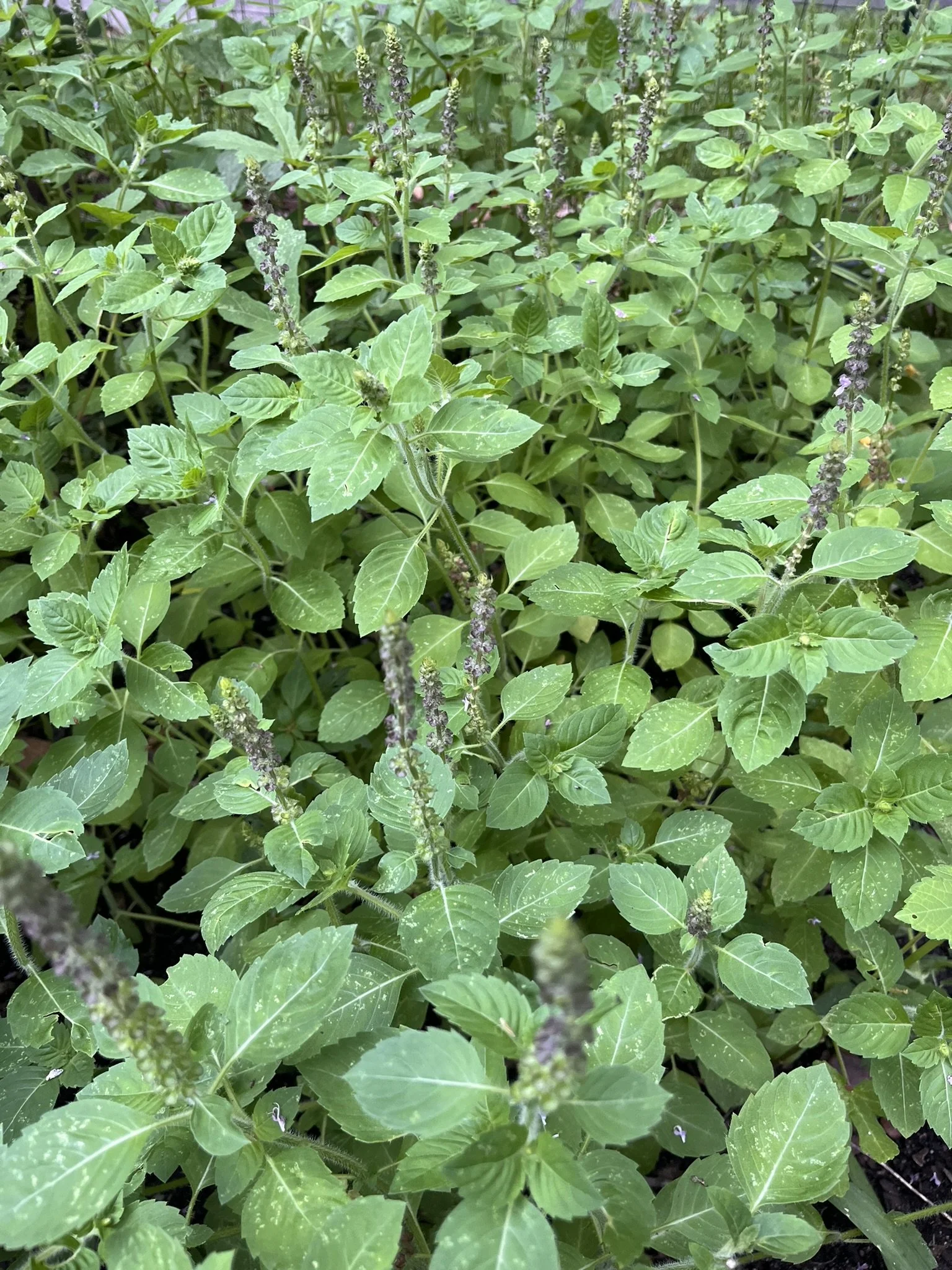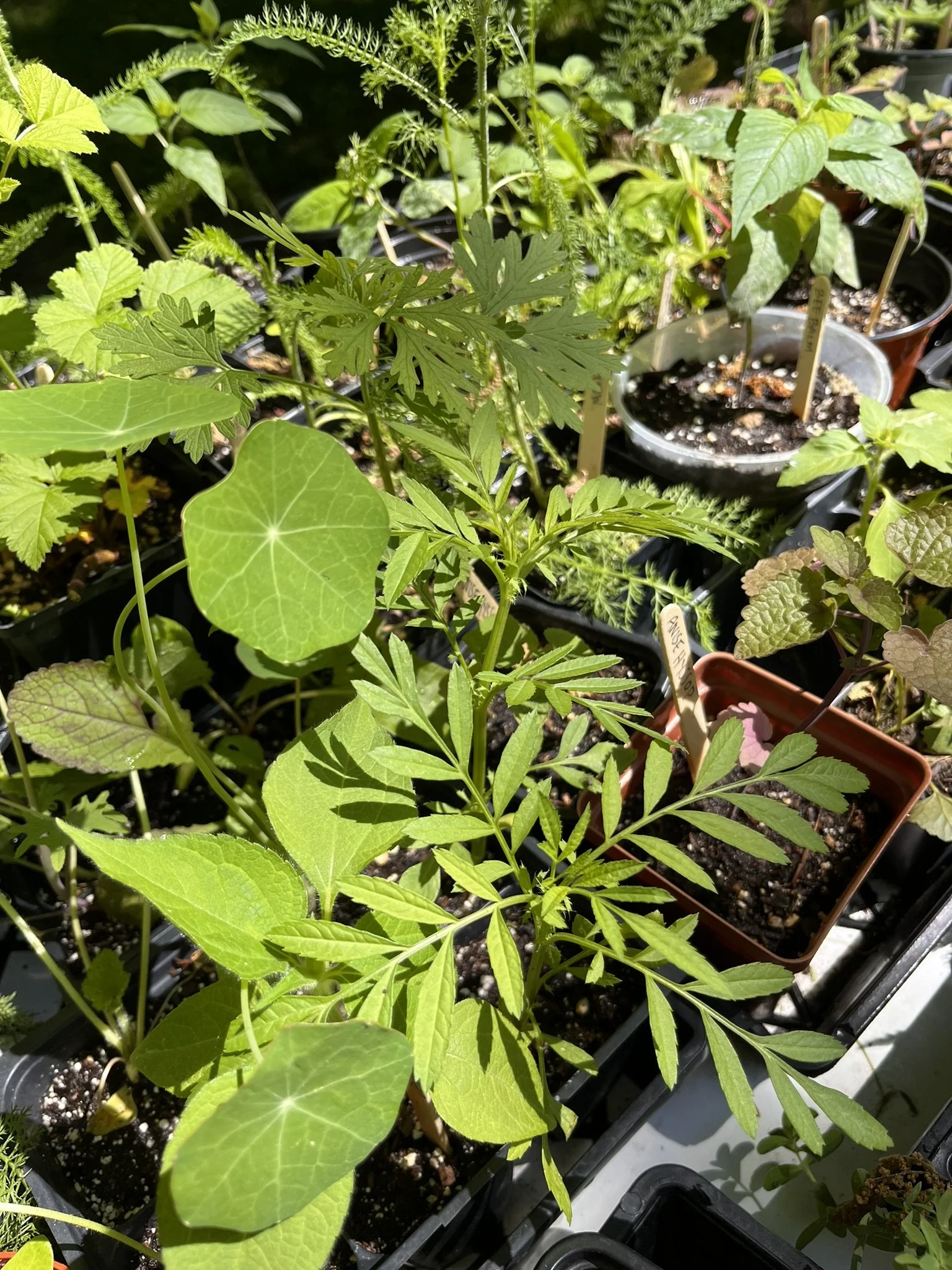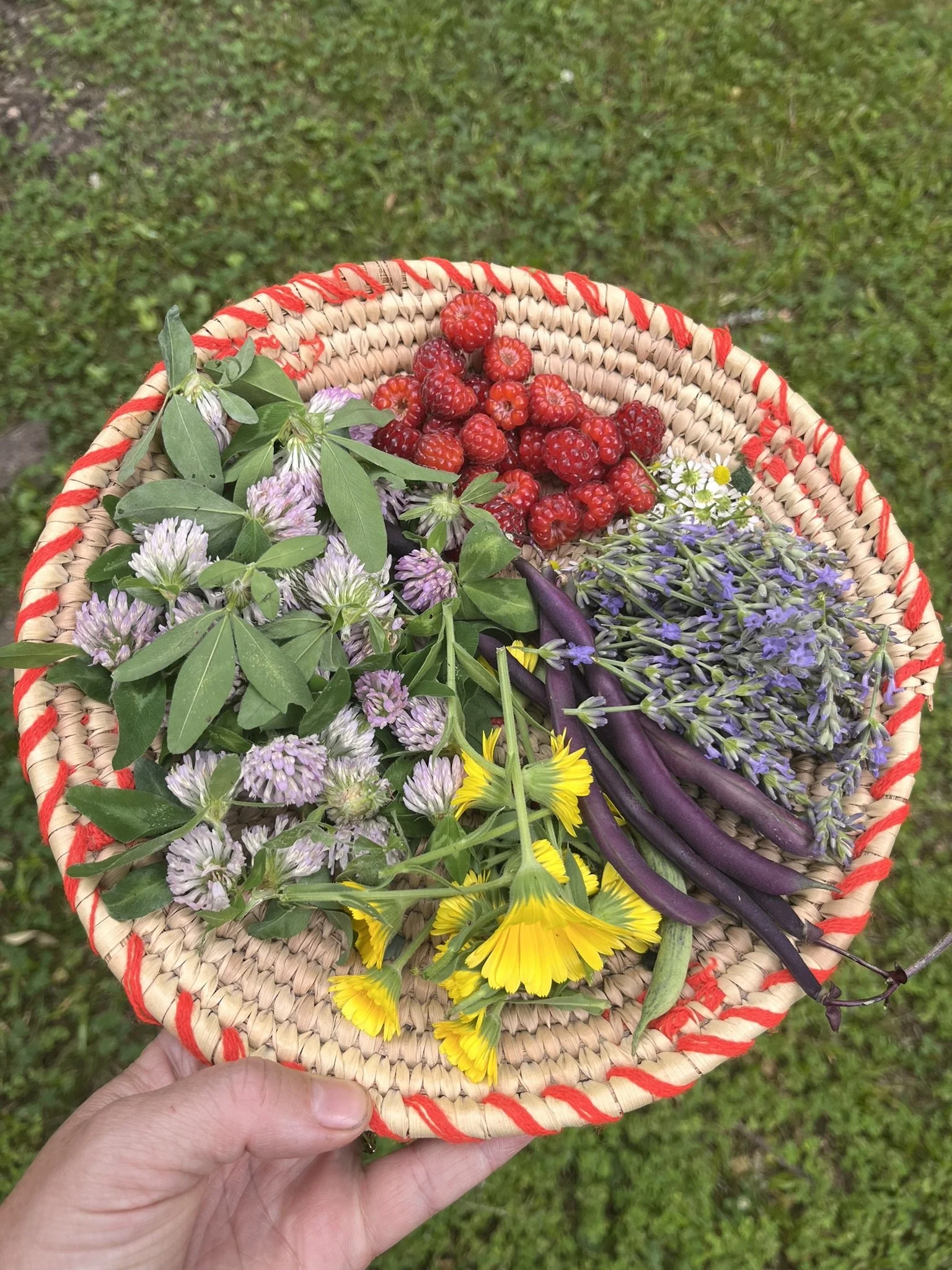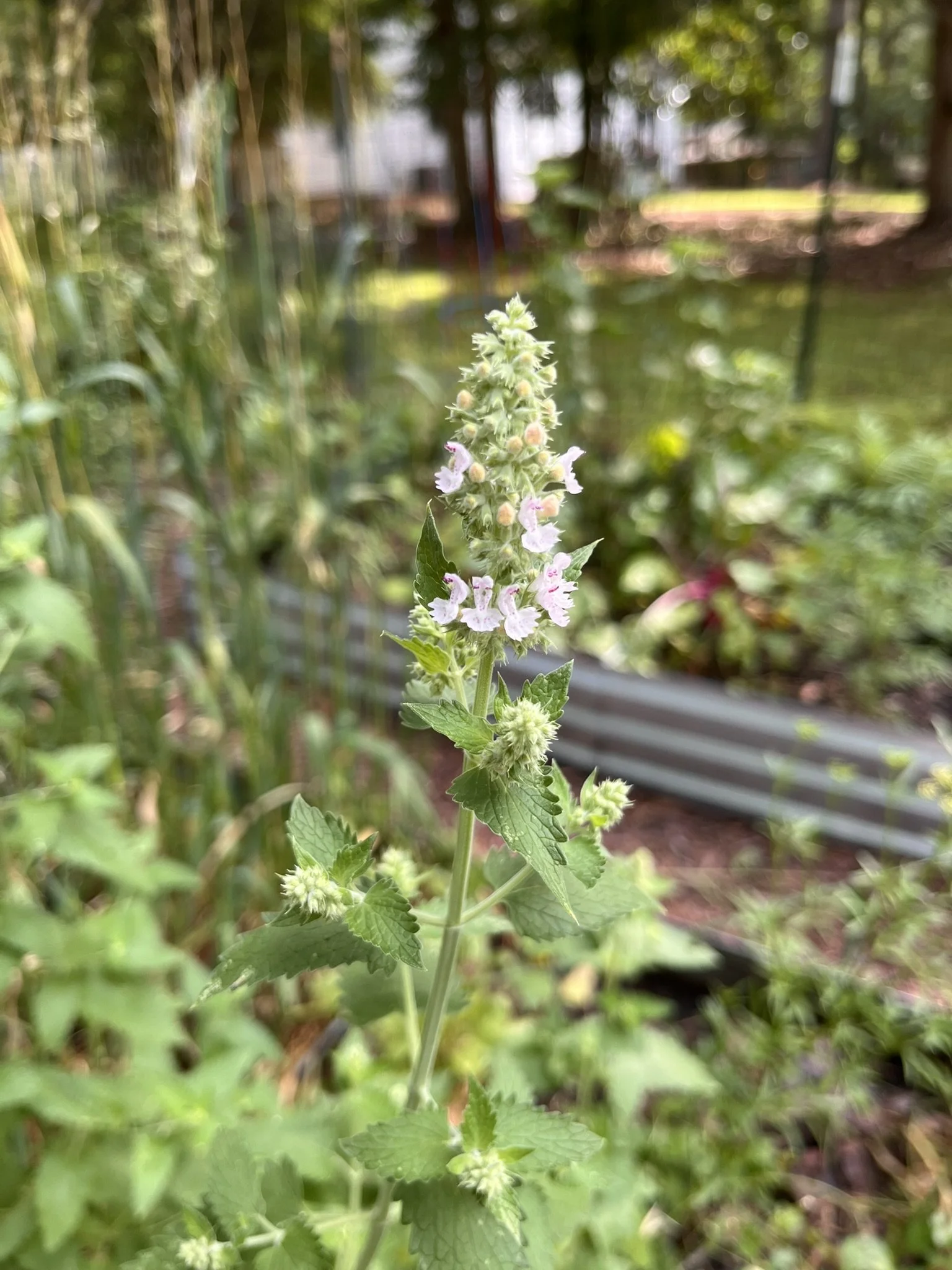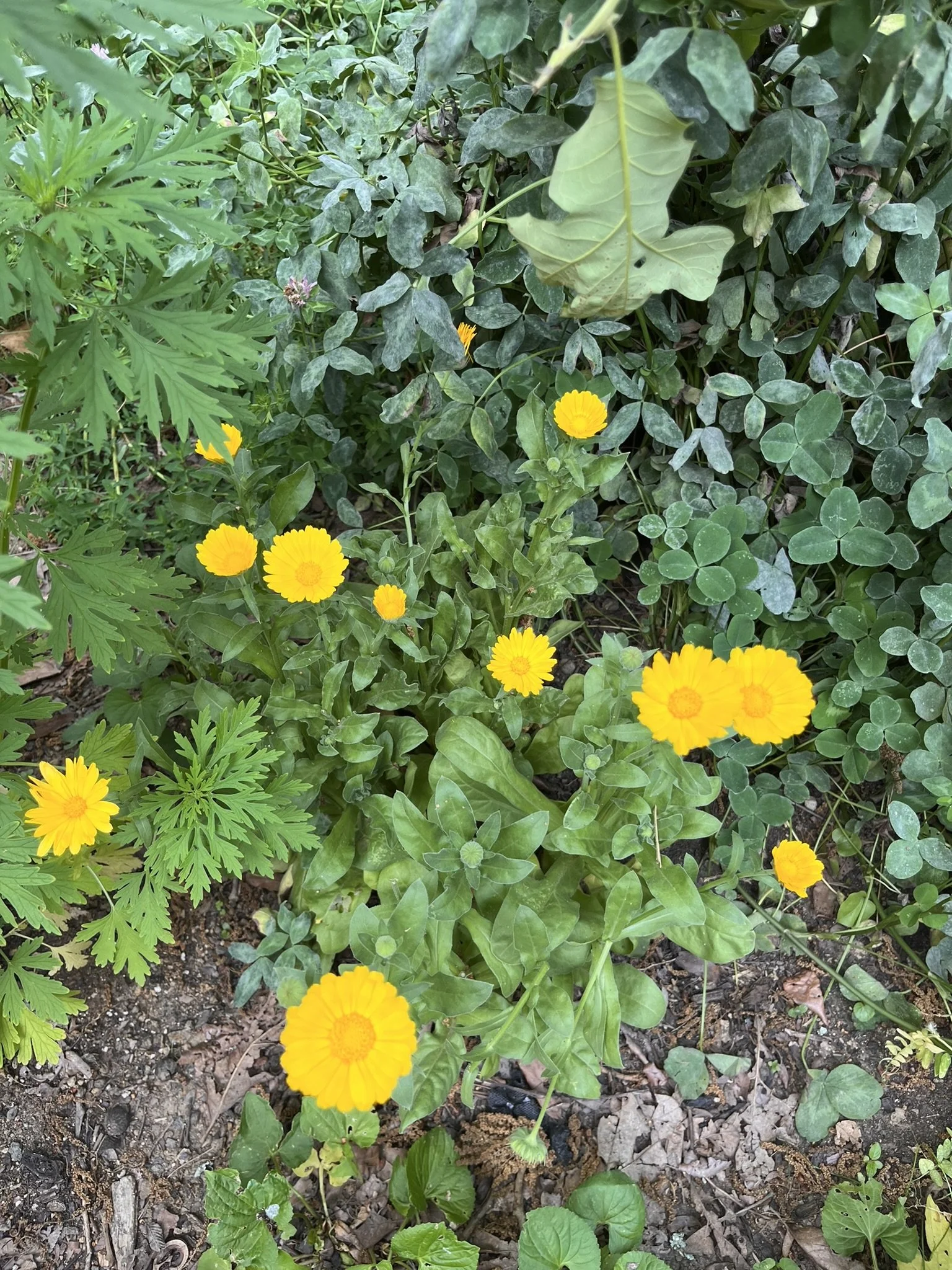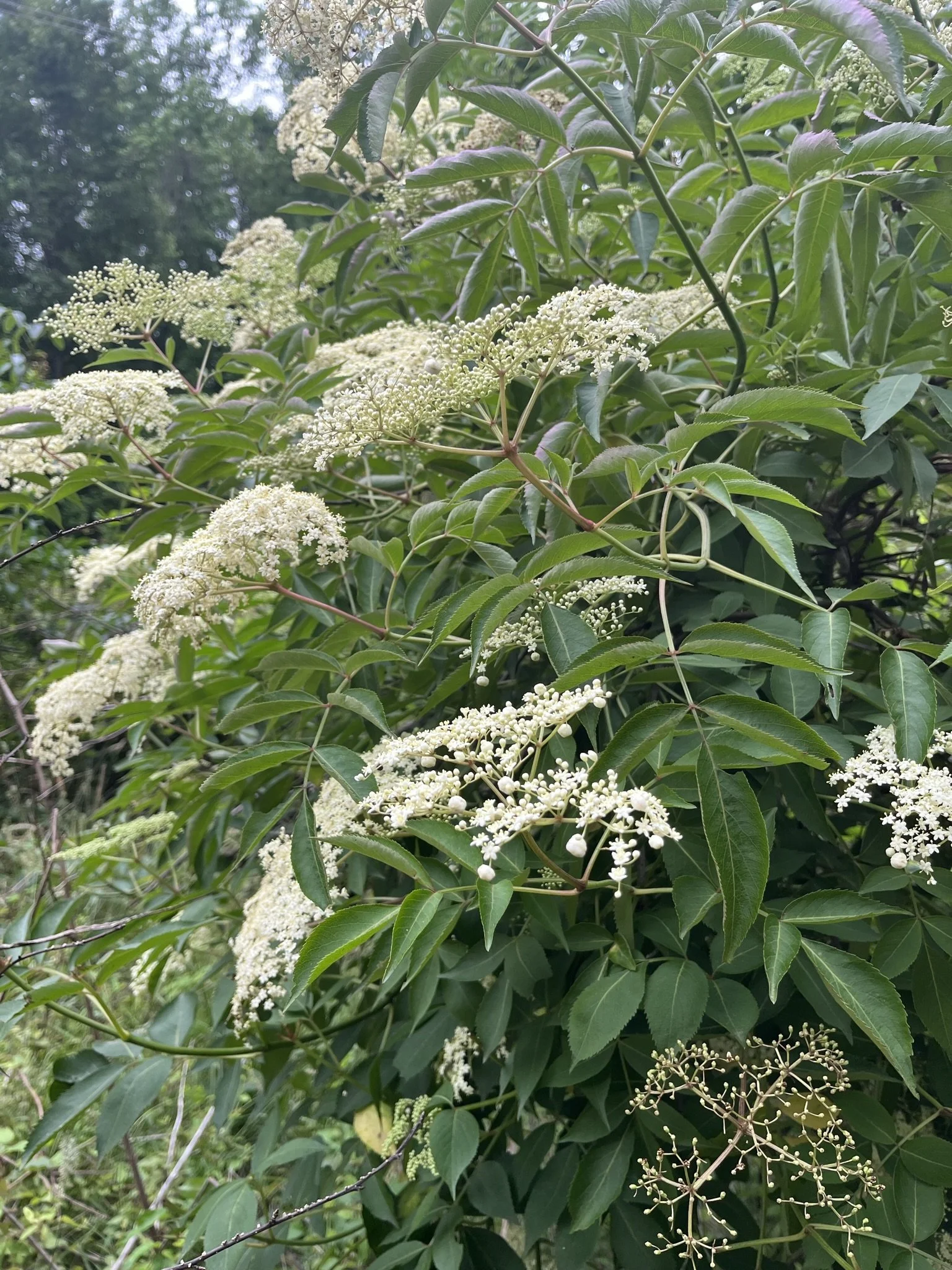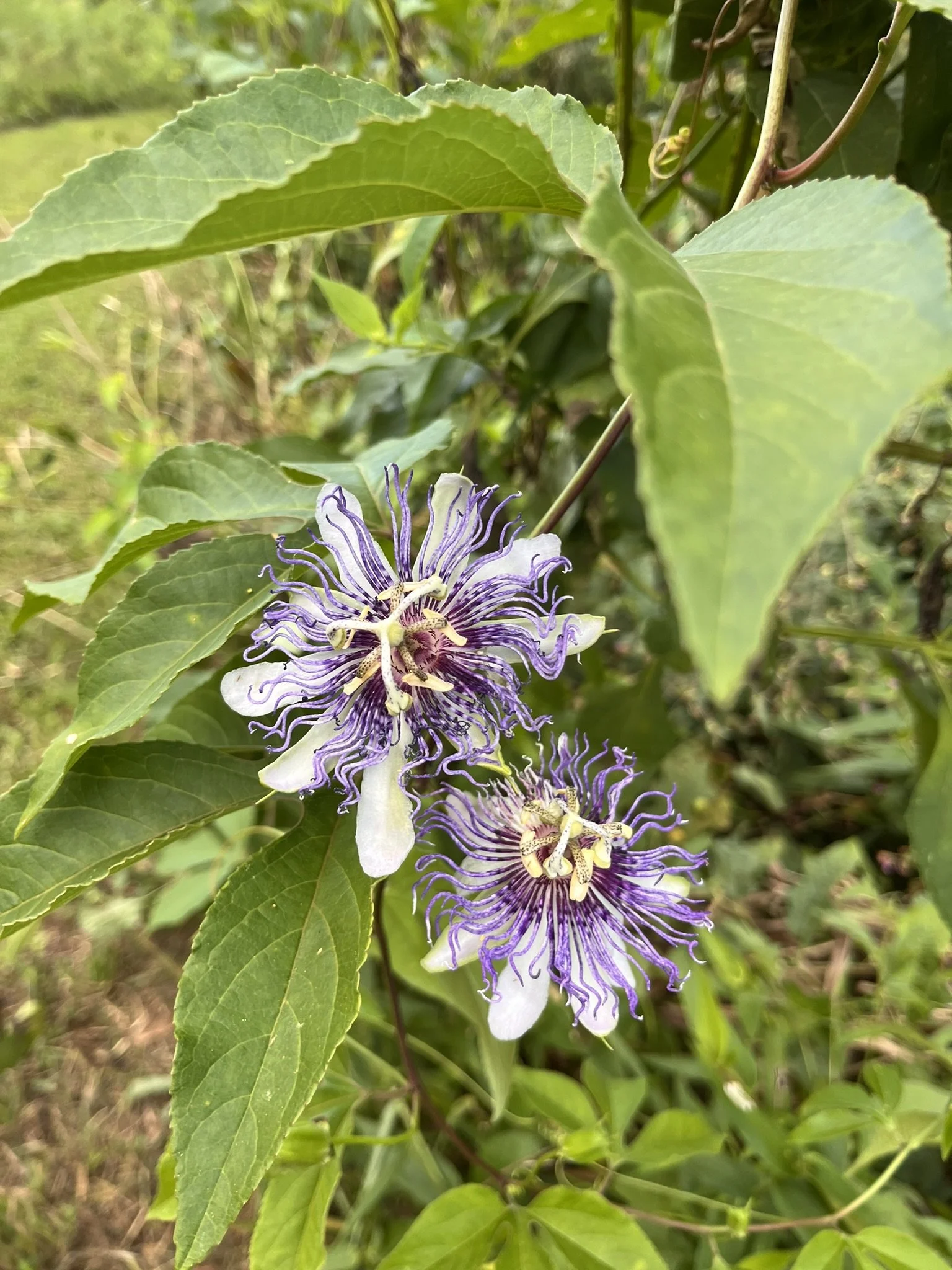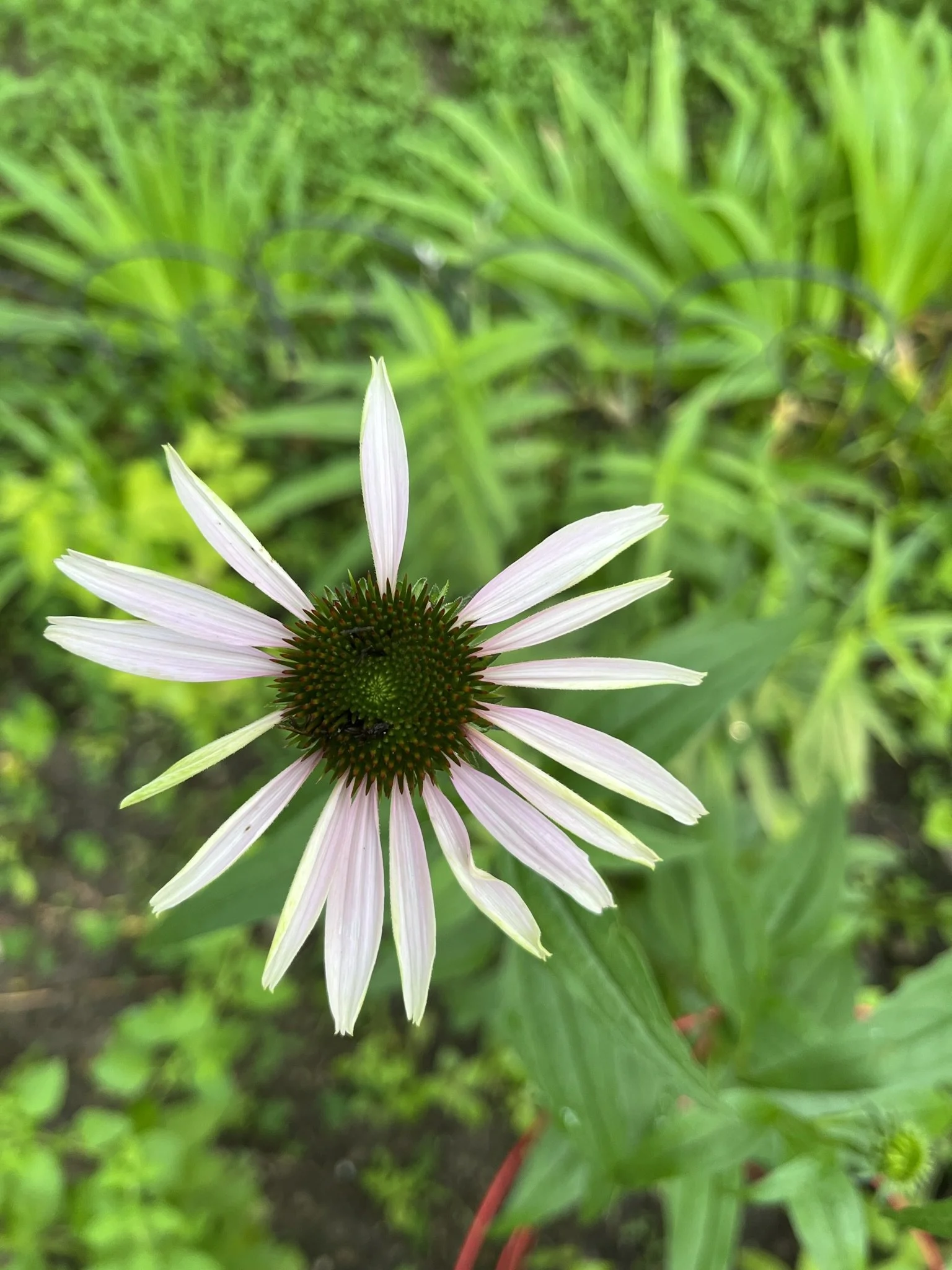Growing your Home Apothecary
This is written for the novice grower, who may be garden or herbal curious. Take what you want from this depending on what you're interested in growing! This post is mostly a list of questions and considerations to help you decide what to grow. It will avoid being too technical or broad, to help keep things focused on just getting you started. Everything I share here is based upon my own experience gardening the last 15 years in Southern California and Central North Carolina.
The main things to consider is what do you want to grow, what are the conditions of your growing space. First step is assessing the space you have to grow in. Is it sunny? Shady? Are you growing in containers or pots? Or in the ground? If in the ground- will this be in a raised bed? Is the soil moisture dry, average, or moist? You’ll generally want to get a sense of how much sun your plants will get, the condition of the soil, and have a plan on how to water and how often!
If you haven’t already, visit your local or state cooperative extension website to learn about your growing zone. This gives you a snapshot of your growing season (approximate last and first frost dates). This can help you plan when to start planting and think through what you want to plant, depending on how long certain plants take to grow. This is also a great resource to learn more about growing conditions for plants in your area.
Some plants need full sun to really shine, while others would do just fine in part shade. Generally, for plants that want sun but are in a shadier spot- the plants will get leggy and bloom less. Which might be fine for some plants (like tulsi or lemon balm) but less fine for other plants (like bee balm or goldenrod)
You’ll also want to consider how much space you have to grow and think about which herbs to plant. And how quickly do you want to harvest the things you grow? Can you grow things in an area for a few years? Or just want to grow a few herbs to harvest from throughout the current growing season? Maybe it is a mix of both. But if you are just interested in growing a few things to harvest from soon, then it would be best to stick to annuals or faster growing perennials. There are many herbs that do great in pots and are easy to grow. And this goes without saying, but would do great in garden beds. In my experience, while many of these herbs prefer full sun, they do fine in part sun.
If you aren’t sure on where to start- the mint family plants are a wonderful place! Most are highly aromatic, attract fun pollinators, and offer nervous system and GI support (among other things). This includes tulsi, lemon balm, anise hyssop, skullcap, rosemary, catnip, peppermint, basil, lavender, bee balm, thyme, and garden sage (so so many more as well). When you buy the plant starts or seeds, double check soil moisture recommendations. Many of these are great culinary herbs, but all are medicinal and relatively safe as long as you don’t have a mint family allergy or only use in culinary serving amounts if pregnant.
You can harvest the above ground parts many times throughout the season and use fresh or dry for tea. If you are more experienced with herbal preparations, you can make these into tinctures or use in oxymels or herbal vinegars! But keep in mind, bitter or acrid herbs (like motherwort or skullcap) are not always great for making a simple garden tea blend, unless balanced out with other herbs. Mint family plants are generally deer resistant as well, if that is an issue for you!
Some other herbs to consider include echinacea, milky oats, red clover, mugwort, evening primrose, yarrow, blue vervain, goldenrod, nettle, maypop, marshmallow, elderberry, california poppy, rose (making sure its an aromatic rose), chamomile and calendula.
There is so much room to explore what you want to grow, and that might shift over the years too. Many of the above plants will either easily reseed or come back each year, either forming a larger clump or spreading via runner roots underground (rhizomatically).
When choosing what herbs to grow, you should think about what you want to use them for? IF you are wanting to grow herbs for your home apothecary are you wanting these herbs to offer immune support? Just culinary? Digestion support? Nervous system support? Topical remedies? All of the above? Or something else entirely. Many of the herbs listed above can be used in a myriad of ways. You can learn more about some of these herbs in the bulk herb section in the apothecary.
Generally, the above ground parts of the herbs I’ve listed are what is used medicinally- the leaves, nonwoody stems, as well as buds and flowers. There are many herbs to consider where you use the whole plant or the roots (like marshmallow root or the whole plant of evening primrose). I’ll talk about harvesting considerations and practices in another post.
My top ten to start with would be: lavender, tulsi, lemon balm, yarrow, garden sage, rose, goldenrod, catnip, skullcap, and beebalm. These are just purely some favorites I have, and this list always feels impossible to cap at 10. I think these 10 herbs have been easier to grow for me, are pretty palatable, you can harvest quite a bit, and they offer GI, nervous system, sleep, and immune support.
If you have a good amount of space, then you should definitely try growing milky oats too! Calendula and chamomile are amazing as well, but you’d need to dedicate a good amount of space to grow these in order to get a good harvest, so if space is limited you might be better off allocating that space to a different plant. You can always try and see! Calendula is such a fun one to grow, even if you don't have the space to grow a ton.
And keep in mind, all of these herbs are great for pollinators. When harvesting try to follow the guidelines of leaving ⅓ behind for them!
Many of the herbs I’ve talked about you can start from seed, but some are slower growing perennials so you might want plant starts for those. Some excellent seed companies to source from are True Love Seeds, Southern Exposure Seeds, and Renee's Garden. You should be able to find plant starts for many of these herbs at local plant nurseries, but some may be harder to source. Local farmers markets will also have plant starts in the Spring and sometimes in the Fall. Again, there is another post coming soon about starting seeds! If that is new to you, don't be hesitant to do some research online. Or skip and just get the plant starts!
Once you choose what herbs you want to grow and source the seeds or starts and get everything planted, you’ll want to keep your plants watered, especially to help them get established and during drier summer months. Watering early in the morning or right at dusk are ideal times. If it hasn't rained in a while, be sure to water. If you're unsure if it's time, stick your hand in the soil and see what it feels like! When temps are above 90 degrees, water twice. Depending on the size of your garden and your climate you could consider different irrigation strategies, but for a small garden, using a garden hose should suffice.
As your plants grow, harvest a bit at a time, before the flower and form seeds. Regular harvesting will encourage new growth as well. You can use the fresh parts of the plant for tea or infused vinegars right away. But if you are wanting to infuse honey or oil, or save for tea later, be sure to dry the plants thoroughly! You can do this using a dehydrating or simply hanging up somewhere out of direct sunlight. Once plants are dry you can store them in a jar or other container.
I love picking fresh leaves off of one of my plants and making a sun tea to enjoy later! It's fun to mix different herbs and see how they taste together or just keep it simple with one. As you grow more herbs you can research more about their uses and experiment making different preparations with them.
Gardening is an experiment, we learn from our successes but more often we learn from our failures. If you don’t know where to begin, just choose one thing and grow from there. I can’t express just how rewarding it is to watch something grow, share in the abundance with others, and build a deeper relationship with these plants and the seasons
